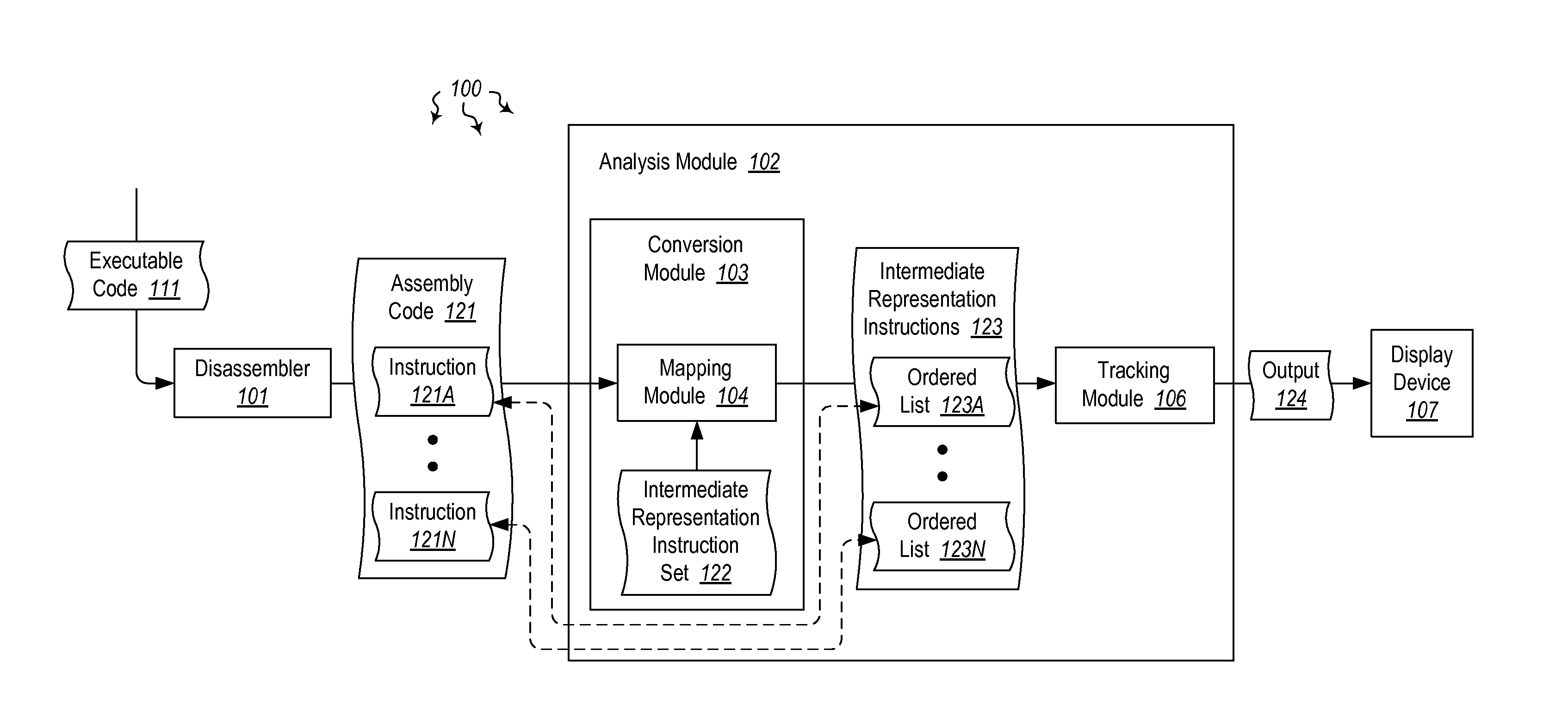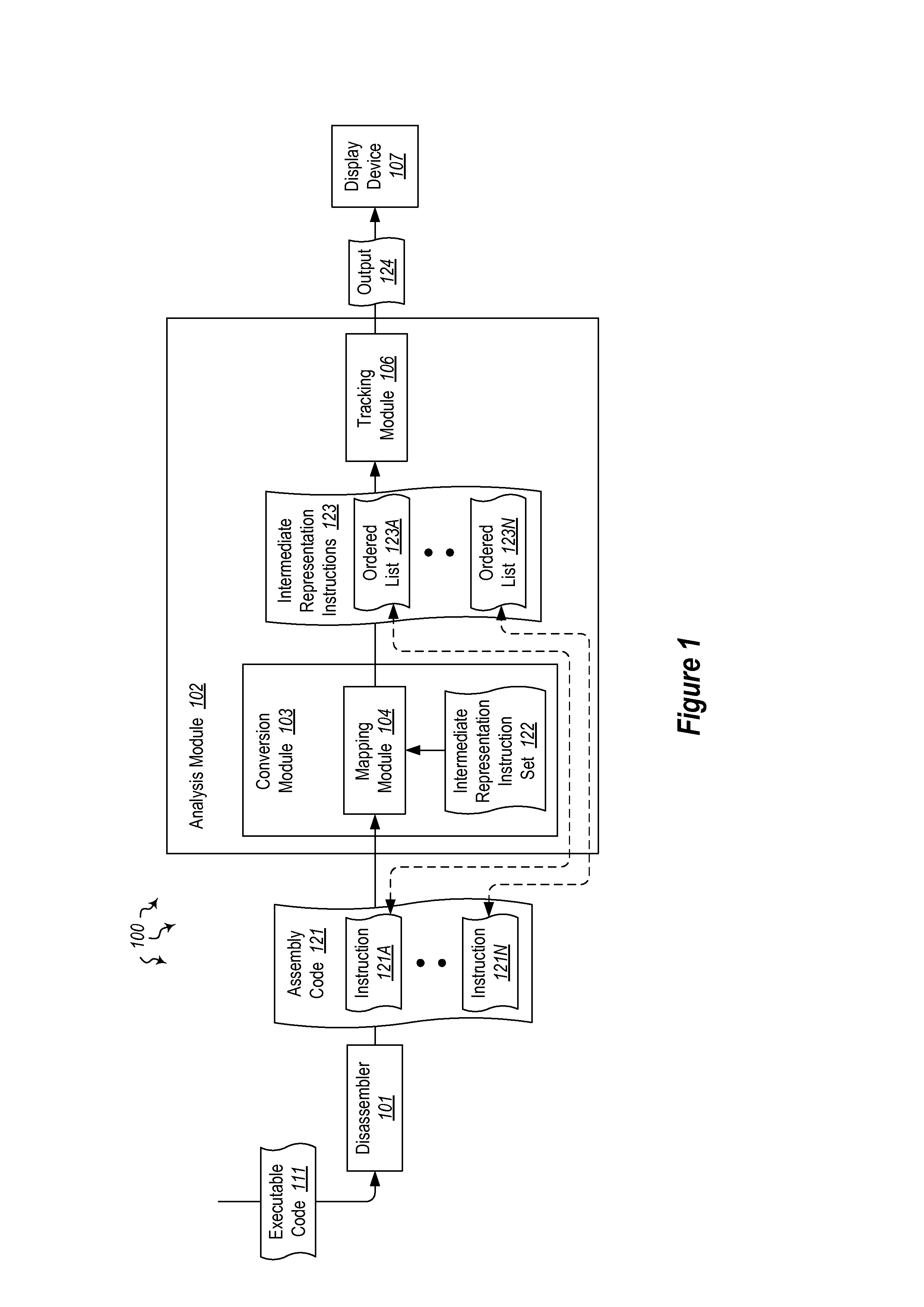Identifying software execution behavior
- Summary
- Abstract
- Description
- Claims
- Application Information
AI Technical Summary
Benefits of technology
Problems solved by technology
Method used
Image
Examples
Embodiment Construction
[0019]The present invention extends to methods, systems, and computer program products for identifying software execution behavior. A portion of assembly code is accessed. The portion of assembly code includes assembly language instructions from an assembly language instruction set. The portion of assembly code was disassembled from a corresponding portion of binary code.
[0020]The portion of assembly code is converted into an intermediate representation. The intermediate representation includes intermediate representation instructions from an intermediate representation instruction set. Converting the portion of assembly code includes mapping each assembly language instruction to a corresponding ordered list of one or more intermediate representation instructions. The ordered list of intermediate representation instructions reduces the complexity of analyzing the behavior of the portion of binary code.
[0021]The path of one or more parameters is tracked within functions of the interm...
PUM
 Login to View More
Login to View More Abstract
Description
Claims
Application Information
 Login to View More
Login to View More - R&D
- Intellectual Property
- Life Sciences
- Materials
- Tech Scout
- Unparalleled Data Quality
- Higher Quality Content
- 60% Fewer Hallucinations
Browse by: Latest US Patents, China's latest patents, Technical Efficacy Thesaurus, Application Domain, Technology Topic, Popular Technical Reports.
© 2025 PatSnap. All rights reserved.Legal|Privacy policy|Modern Slavery Act Transparency Statement|Sitemap|About US| Contact US: help@patsnap.com



